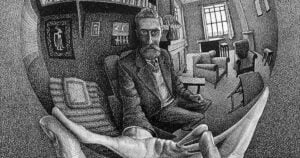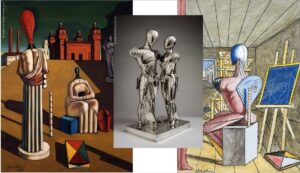[box type=”note” ]
THE CRIME WAS ALMOST PERFECT
Curated by Cristina Ricupero
PAC Padiglione d’Arte Contemporanea, Milan
11 July – 7 September 2014 [/box]
[googlemap src=”https://maps.google.it/maps?q=Il+PAC+in+via+Palestro+14+a+Milano&ll=45.473064,9.199253&spn=0.003107,0.004233&safe=active&fb=1&gl=it&cid=10791706647896474818&t=h&z=18&iwloc=A” width=”700″ ]
During the summer 2014 the rooms of the PAC Pavilion of Contemporary Art in Milan will be transformed into “almost” perfect crime scenes, with a group exhibition that brings together over forty Italian and international artists who cross the bridges linking art and the aesthetics of crime.
ARTISTS: Saâdane Afif, Kader Attia, Dan Attoe, Dirk Bell, Bik Van der Pol, Jean-Luc Blanc, Monica Bonvicini, Ulla von Brandenburg, Aslı Çavuşoğlu, Maurizio Cattelan, François Curlet, Brice Dellsperger, Jason Dodge, Claire Fontaine, Gardar Eide Einarsson, Matias Faldbakken, Keith Farquhar, Dora Garcia, Douglas Gordon, Eva Grubinger, Richard Hawkins, Karl Holmqvist, Pierre Huyghe, Gabriel Lester, Erik van Lieshout, Jonas Lund, Jill Magid, Teresa Margolles, Fabian Marti, Dawn Mellor, Mario Milizia, Raymond Pettibon, Emilie Pitoiset, Julien Prévieux, Lili Reynaud-Dewar, Aïda Ruilova, Allen Ruppersberg, Markus Schinwald, Jim Shaw, Noam Toran, Luca Vitone e Herwig Weiser Promoted by Milan Council for Culture and produced by PAC and CIVITA for this Italian edition, the exhibition is curated by Cristina Ricupero and is currently touring to Milan after its first debut at Witte de With Center for Contemporary Art (Rotterdam, the Netherlands), enriched with new Italian works.
Like any good detective story, art history is filled with enigmas, myths, and riddles waiting to be unraveled. Solving these intellectual puzzles is a common pleasure and few are immune to such a cultural temptation. Although the link between art and crime can be traced back to ancient times, Thomas De Quincey explicitly theorized this connection in his notorious essay “On Murder Considered As One Of The Fine Arts” (1827). The nineteenth century also saw the growing importance of photography both in the development of criminology and in the new sensationalism of the tabloid press—two phenomena that popularized the genre of the detective story
Cinema soon became the perfect medium for capturing the dubious charm of violence and transforming it into pleasurable images. Following De Quincey’s ironic proposal to analyze murder from an aesthetic point of view, The Crime Was Almost Perfect is an exhibition that invokes the spirits of visual art, architecture, cinema, criminology, and the modern crime genre. Beyond crime, there is Evil. Thus The Crime Was Almost Perfect necessarily examines the relationship between ethics and aesthetics. Questioning the role of authorship, authenticity, trickery, and fraud, the exhibition blurs the dichotomy between ‘good’ and ‘bad’ taste, while also highlighting the double bind of ‘crime as art’ and ‘art as crime’.
Zombie Painting #3, 2007
Olio su pannello
Courtesy dellâartista e Praz-Dellavade, Parigi
The exhibition brings together over forty local and international artists who cross the bridges linking art and the aesthetics of crime, including challenging works encompassing a multitude of artistic strategies. New and already existing projects as well as a collection of unexpected objects are immersed in unorthodox ways within an environment specially designed by Fabian Marti, that guides the viewer through routes containing different chapters. Some of the works in the exhibition reflect the detective’s obsessive curiosity and interpretation, the narcissistic identification with the criminal, as well as the spectator’s fetishistic pleasure. A few projects deal with authenticity and frauds that could be considered as ‘art crimes’; some play with the artist’s role as subversive and marginal; others with law, order, and transgression; certain projects tend to represent crime as macabre and sublime as in the cinematic; while a few proposals provide evidence of public historical events—social, political crimes. A few projects could be said to combine selections of these main tendencies. Any part of the exhibition space will be involved: Gabriel Lester will collaborate with Jonas Lund to devise viral intervention affecting the website of the PAC; Eva Grubinger puts up a flag and a brass plaque on the façade of the Pavilion, turning it into the Embassy of Eitopomar, a utopian kingdom ruled by the evil master villain Dr. Mabuse. At the entrance desk, a wall painted by Jean-Luc Blanc resembles the cover of a pulp magazine signed with the show’s title. In addition to a series of works presented at the Witte de With, the exhibition at PAC is enriched with new works, all of Italian artists: Maurizio Cattelan, conceived a bouquet of handkerchiefs to wipe ideally away the tears shed for the bomb attack that destroyed the PAC and killed four persons on 27 July 1993; Luca Vitone presents a large installation on which appears, as an epitaph, the list of the 959 members of P2 lodge ( a secret anti-communist association formed during the Cold War), referring in an ironic as well as sad way to an obscure chapter of the Italian history; Mario Milizia reproduces in a detailed way sets which are inspired by real recoverings and illegal sales of archeological artifacts. While a quote from Karl Holmqvist’s film -“Why is desire always linked to crime?” – will be constantly on the spectators’ mind, Monica Bonvicini presents a machine of torture and desire consisting of six climbing belts in black latex suspended by chains on a slowly turning steel ring.
Steal This Book, 2009
Installazione
FNAC 10-895
Photo: Centro Galego de Arte Contemporànea, Santiago de Compostela, Spain.
Courtesy dell’artista e del Centre National des Arts Plastiques, Francia
In the film Murder in Three Acts, Aslı Çavuşoğlu mimics the television crime genre (exemplified by the series Crime Scene Investigation) showcasing exhibitions as crime scenes and art works as weapons, while Fabian Marti leaves imprints of his hands throughout the exhibition spaces. Gabriel Lester creates a cinematographic loop of crime scenes and projects it onto the surrounding walls and on the visitor. The cinematic is also present through uncanny paintings by Dan Attoe, Richard Hawkins, and Dawn Mellor as well as with Brice Dellsperger’s and Aïda Ruilova’s films. Lili Reynaud-Dewar stages an elaborate installation addressing Jean Genet’s life and work as a writer, an activist, and a thief, while Dora Garcia invites the audience to steal a book. Jim Shaw ironically portrays businessmen as zombies through a set of paintings and a film, while Saâdane Afif presents the Centre Pompidou as a coffin softly killing the museum.

Pac Milan – The crime was almost perfect
More from NewsMore posts in News »

